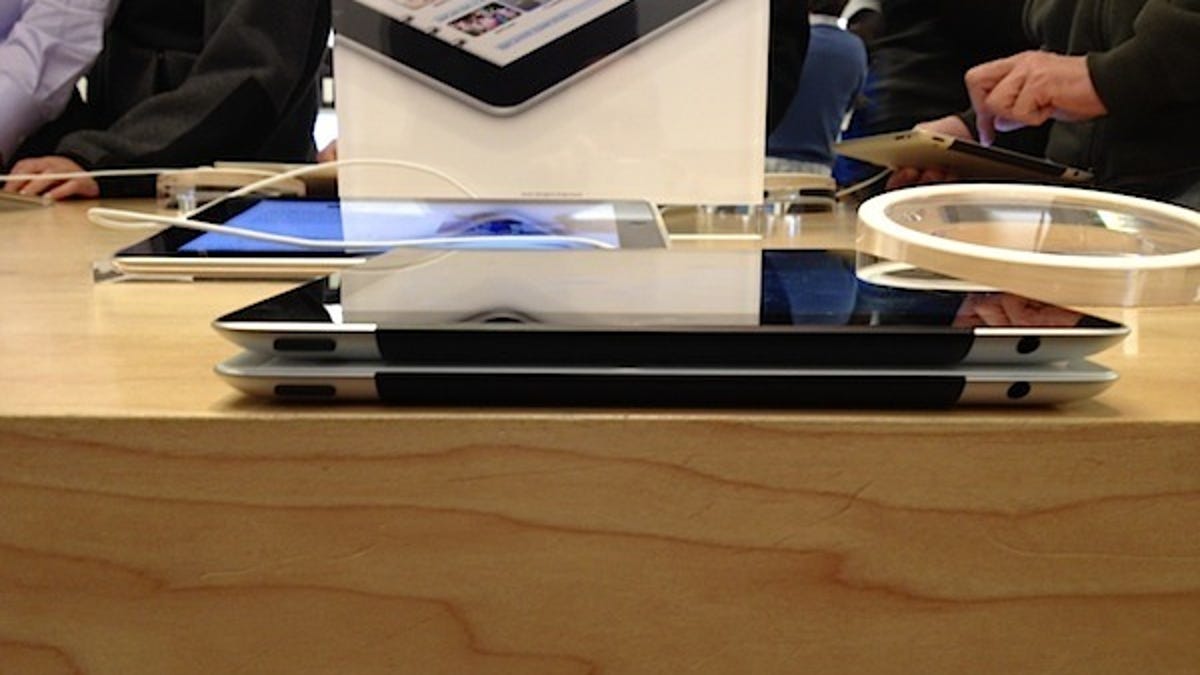Did Apple settle on Plan B for the third-generation iPad?
Apple may have had designs on a thinner tablet for what arrived as the new iPad. If only it could have gotten hold of the display technology that it really wanted.

As great as the third-generation -- aka "new" -- iPad is, I've always wondered whether the design was compromised.
Of course that statement alone is enough to incur the everlasting wrath of the Apple crowd. So let me say that I use the gen 3 iPad pretty much every day and have relegated my older iPad 2 to backup duty. In other words, I like the new iPad and love the 2048x1536-pixel, 264-pixels-per-inch (ppi) Retina display. (Not to mention the 4G LTE.)
Still, the fact that the newer version is thicker and heavier than the older one strikes me as being at odds with Jobsian philosophy, as I've written before. (And it has given me newfound appreciation for my 10-inch Motorola Xyboard tablet, which is easier to hold for long periods of time than the new iPad.)
Some analysts are now saying that the gen 3 iPad design that made it out the door earlier this year was Plan B for Apple. Plan A was an iPad that didn't have the additional heft. (While the Apple tablet's height and width remained the same, the thickness of the new iPad swelled slightly to 0.37 inch and the weight edged up to 1.44 pounds.)
That's what Raymond Soneira, the founder, president and CEO of DisplayMate Technologies, is saying, and he knows a lot more than me about the ins and outs of the newest iPad.
"The plan was to use this new technology called IGZO from Sharp -- a lot higher electron mobility that allows them to make the transistors a lot smaller and the circuit elements a lot smaller," he said.
In short, smaller transistors and circuit elements allow more light through and reduce the number of backlights needed, resulting in a thinner display assembly.
There was one problem, though. Sharp didn't have its IGZO display tech ready in time. So, Apple had to fall back on more conventional amorphous silicon technology.
"There's no question that the iPad 3 is Plan B. They pushed amorphous silicon to a higher [pixels per inch] than anybody else. But the light throughput is not good. So it has roughly twice as many LEDs, and they had to get a 70 percent larger battery," Soneira said, referring to today's third-generation iPad.
Richard Shim, an analyst at DisplaySearch, agrees with that assessment. "The idea was that IGZO would enable a brighter display and you could use less LEDs and you wouldn't need as big a battery compared to amorphous silicon," Shim said.
My takeaway from listening to both is that Apple, in typical fashion, made (a) impossible and (b) almost-impossible demands on its display partners -- Sharp and Samsung, respectively. It settled for the almost-impossible, amorphous-silicon Retina display that we have today.
And based on my own experience with new iPad, that's not a bad backup plan.

